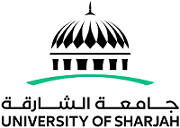Molecular and Clinicopathological Characteristics Study of Breast Cancer Cohort in the UAE =الخصائص الجزیئیة والباثولوجیة السریریة لسرطان الثدي في الإمارات العربیة المتحد ة /
وكيل مرتبط
Bendardf, Riyad,, مشرف الرسالة العلمية
Magazachi, Azzam., مشرف الرسالة العلمية
Hamoudi, Rifat Akram., مشرف الرسالة العلمية
Talaat, Iman., مشرف الرسالة العلمية
تاريخ النشر
2019
اللغة
الأنجليزية
الكلمة الدالة
نوع الرسالة الجامعية
Thesis
الملخص
Breast cancer (BC) has become the most common cancer globally and in the United Arab Emirates. Therefore, discovering biomarkers in different BC molecular subtypes can guide personalized medicine. The tumor microenvironment (TME) is complex and composed of various cell types, including tumor-infiltrating lymphocytes (TILs), that play a crucial role in tumor progression and eradication. The Insulin-like Growth Factor 1 receptor (IGF1R) is one of the molecules involved in proliferation and anti-apoptotic processes in BC. Further, immune checkpoint markers such as programmed death receptor ligand 1 (PD-L1) and indoleamine-2,3-dioxygenase 1 (IDO1) have been associated with tumor immune evasion. This study explored the expression pattern of IGF1R, the status of TILs, CD8, CD56, PD-L1 IDO1, and cell cycle kinases (CDK4/6) in correlation with various BC molecular subtypes and clinicopathological parameters. Additionally, transcriptomic analysis was done on patient specimens to identify enriched pathways for gene discovery. Materials and methods: We selected 65 patients with primary infiltrating breast cancer and analyzed tissue sections for the presence of TILs. Additionally, we conducted immunohistochemical staining for IGF1R, PD-L1, IDO1, and CD8. We selected 59 patients with primary infiltrating breast cancer and analyzed tissue sections for the presence of TILs. Additionally, we conducted immunohistochemical staining for IGF1R, PD-L1, IDO1, and CD8. Moreover, in-silico tools were used to assess the expression of CD274, IDO1, and CD3ε in various molecular subtypes of BC. NGS was performed on a representative sample of BC patients to identify differentially expressed genes (DEGs), enriched pathways by Metascape, and immune cell enrichment by CIBERSORT analysis. BC cell lines representing luminal subtype and triple negative BC (TNBC) were used for further functional validation. In addition, publicly available BC patient datasets were utilized for in silico validation studies for the identified DEGs. Results: The
ملاحظة
A Dissertation Submitted in Partial Fulfilment of the Requirements for Ph.D. in Molecular Medicine and Translational Research, University of Sharjah, 2019.
المجموعة
القالب
أطروحات
تصنيف مكتبة الكونجرس
WP815 K45m 2019
المعرف المحلي
b16376699

